Conservation by design: Using conservation principles in disc golf course design
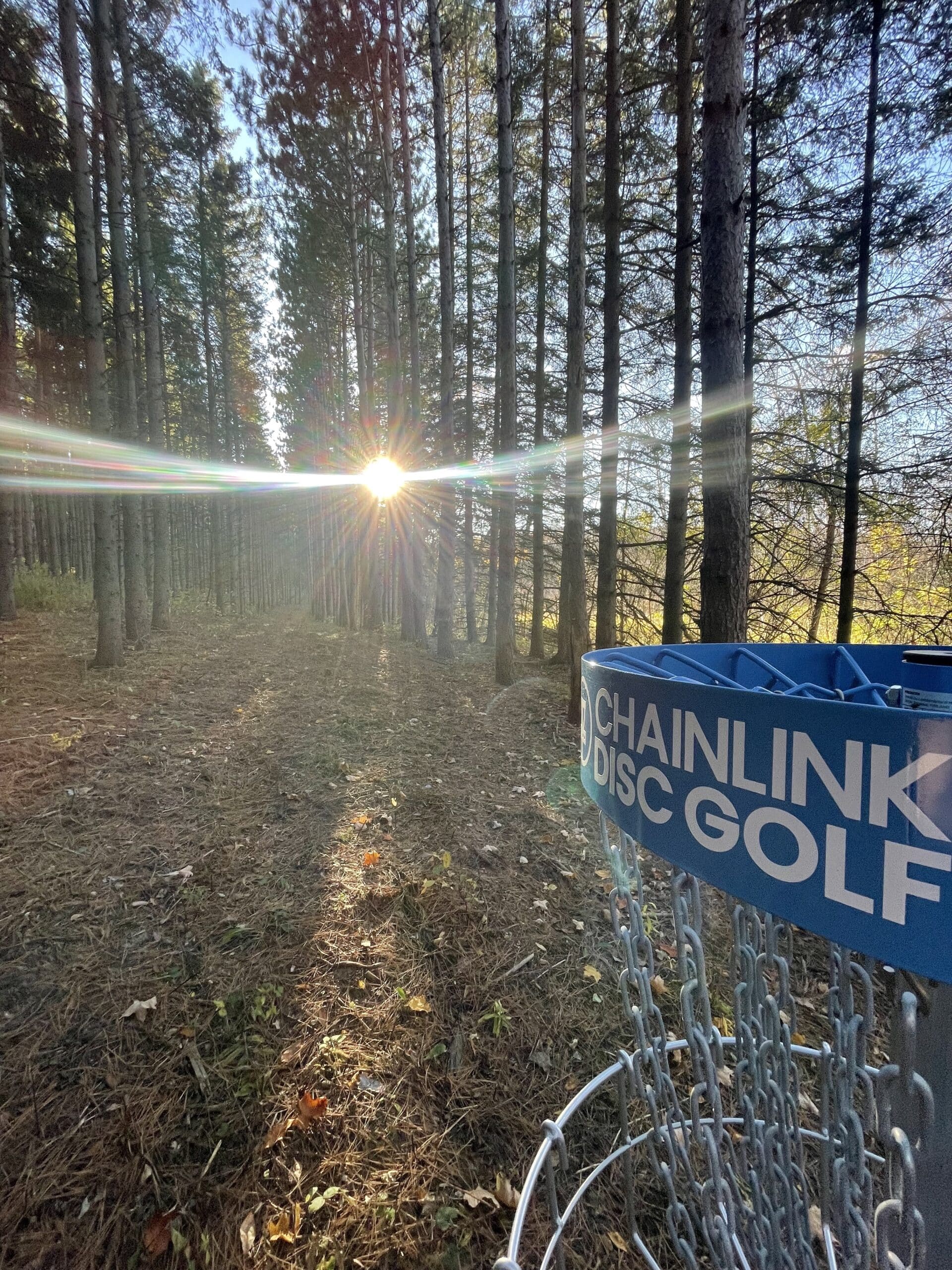
Hole 17 at Albion Hills looking back through pine plantation
When you first embark on a project, you rarely know how it will change you.
It was nearly three years ago when we started engaging with the Toronto and Region Conservation Authority (TRCA) to discuss whether disc golf would be well-suited for conservation lands. It was a journey through time and history, forests and meadows and geology and botany. As we met with a multitude of TRCA experts including the ecology, archaeology, forestry, ornithology and habitat restoration teams, it became clear very quickly that designing a disc golf course while keeping conservation top of mind is complex, and requires a delicate balancing act when considering the needs of an entire ecosystem.
It was quite a process, and we learned a lot.
Since that time, we have designed and built three disc golf courses with TRCA and designed another with Conservation Halton (CH), two conservation authorities local to us. The conservation authority teams put in an incredible amount of effort, and working alongside them brought these principles to life. But these principles aren’t just for disc golf courses located on conservation lands. They are beneficial when applied across all disc golf design projects. As course designers and builders, it’s critical for the sustainability of our sport — and our courses — to be mindful of the impact our presence has on landscapes. Our understanding of how to manage forests, remove invasive species and maintain and build habitat can directly influence the success of disc golf course projects. Here are just a few things we learned:
Forest Management Practices
Forests are constantly changing and proper management of these areas creates a healthy ecosystem. Disc golf holes often find themselves weaving through the woods, and as course designers, we need to understand the landscapes and forests in which we find ourselves. Some of this knowledge is widely applicable across many regions, but there are also nuances that are localized and specific to each area.
In Southern Ontario, Canada, where we live, much of the land has been cleared of virgin forests to make way for agriculture and the small family farms that still dominate the region. Jay Clark, the Park Supervisor at Albion Hills, explained that some of these conservation lands were planted with red pines, because as a fast-growing softwood, they expedite the natural succession processes of cleared land transitioning back to mature forest.
It’s easy to identify these ‘man-made’ pine plantations because the trees were planted tightly together in long, straight rows. This looks very different from a natural forest where multiple species are present somewhat randomly. As the pine trees grow, plantations are thinned by removing every other row. This thinning allows patches of sunlight down to the forest floor and gradually a mature forest of maples, oaks and walnuts emerges. This thinning can make for some natural disc golf holes too, but you’ll want to be mindful of those smaller hardwood saplings. These are the future of the forest, and your disc golf course, once the pines invariably start to fall.
Removing buckthorn and dog-strangling vine
Invasive species have an incredibly detrimental effect on natural landscapes. They out-compete native species which results in a lack of biodiversity, habitat loss and soil degradation, among numerous other social and economic impacts.
Before you finalize a hole design, it’s important to first take stock of the trees and shrubs you have. Wherever possible, desirable species should stay and invariably, you’ll find some of these to be magnificent specimens worth highlighting on your course. Take a qualified arborist or a member of the conservation authority with a specialized knowledge of trees to walk the land with you.
In our design at the Albion Hills Conservation Area, two invasives were quite a prominent part of the landscape. Buckthorn has spread aggressively through many areas of Canada, and removing it was the first priority. With the forest opened up, we could see different lines and were able to showcase new land features. Now, whenever people finish the hole, they can see a wetland in the distance before they sigh and count their throws.
Dog-strangling vine (DSV) also crowds out native species and prevents natural forest regeneration. Through mindful design, we were able to create disc golf fairways that will help control entire swaths of DSV due to fairway maintenance by equipment and foot traffic.

Dog-strangline vine: an invasive plant as nasty as its name.
As we have walked the land, we have also seen the impact first-hand of the invasive emerald ash borer, a small metallic green beetle that attacks ash trees and kills about 99 percent of them within 10 years. This can negatively affect forest tree composition and natural succession processes, so considering these factors is important as this can have dramatic impacts on the shape of your disc golf holes in years to come.
“Rabbitat”
The best way to understand the habitat features of the land is to walk it with the internal conservation authority teams. Using historical maps on these walks, we identified old farming paths to use so we could minimize disruption to more naturalized areas. TRCA teams identified nesting bird habitats of species-at-risk so we were able to avoid those areas with the disc golf course layout. As bird (and birdie) lovers, we found these teams to be excellent resources who were thrilled to share their knowledge about birding conservation.

Rabbitat at Albion Hills
We as disc golfers also benefit from maintaining habitat when we experience wildlife sightings on the course. Many of us play disc golf to reconnect with nature and seeing a monarch butterfly in a meadow, a flying squirrel climbing a tree or a deer passing through at dusk are magical moments, grounding us in a world that is bigger than ourselves. These are important reminders of why thinking more broadly about conservation benefits us all.
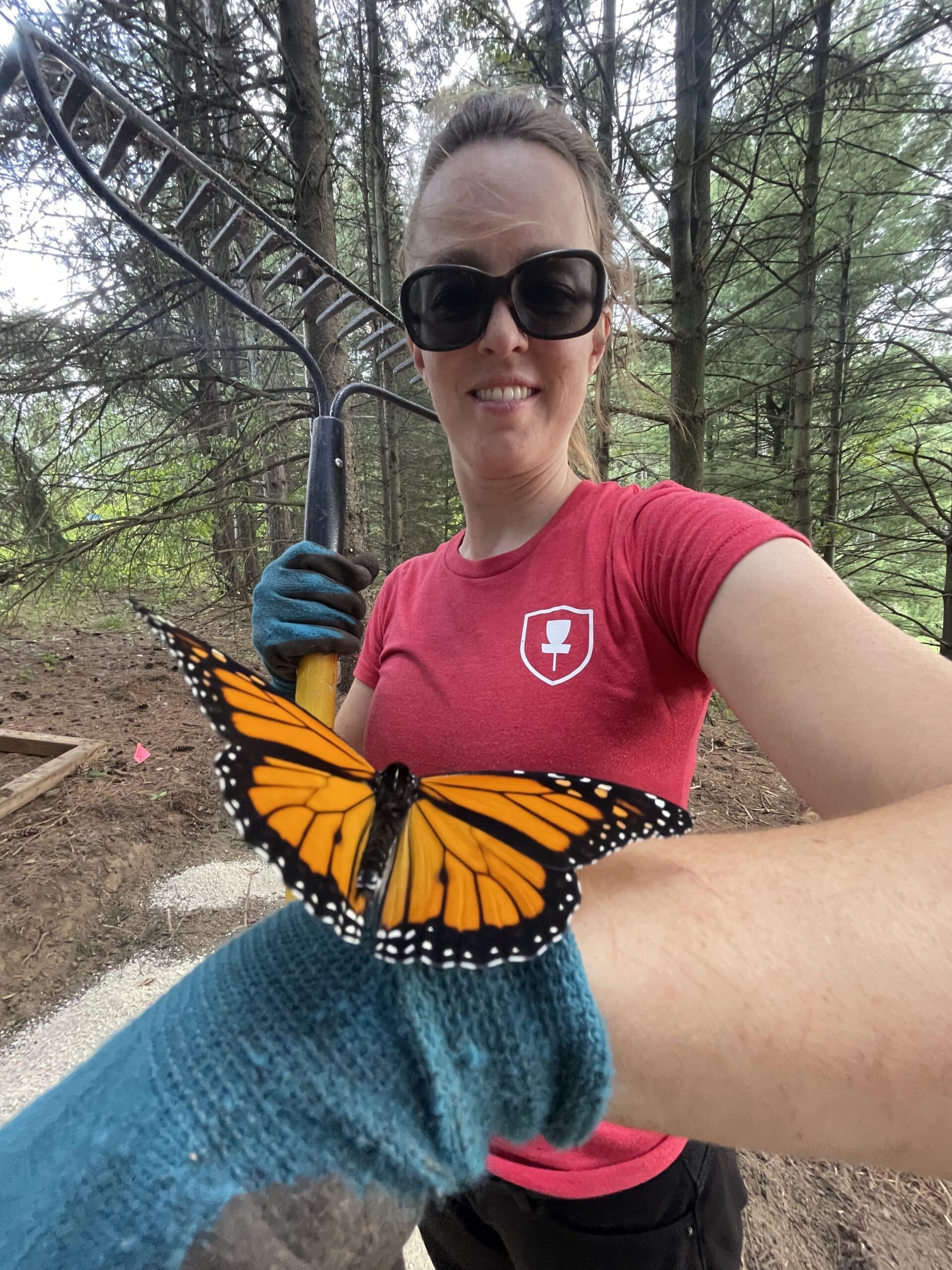
Girls Can Too program
Disc golf courses are a great vehicle for sharing knowledge and it’s helpful to consider how you want this to come to life in your project in its early stages. Conservation authorities pride themselves on a strong focus on education with thousands of young people visiting their parks every year.
Incorporating conservation facts into signage is an easy way to bring an interpretive element to the disc golf experience. As someone involved in the design and build of a course, your target audience may have a significant influence on your choice of conservation facts. The beginner-friendly Albion Hills and the Kelso disc golf courses have conservation facts on each tee sign about local animals that can be found in the region including various birds, turtles, white-tailed deer and ruffed grouse. The idea was to get people thinking about conservation, nature, and the beauty of their surroundings. These nine hole courses are perfect for children- focused activities and educational programming like camps and school visits.
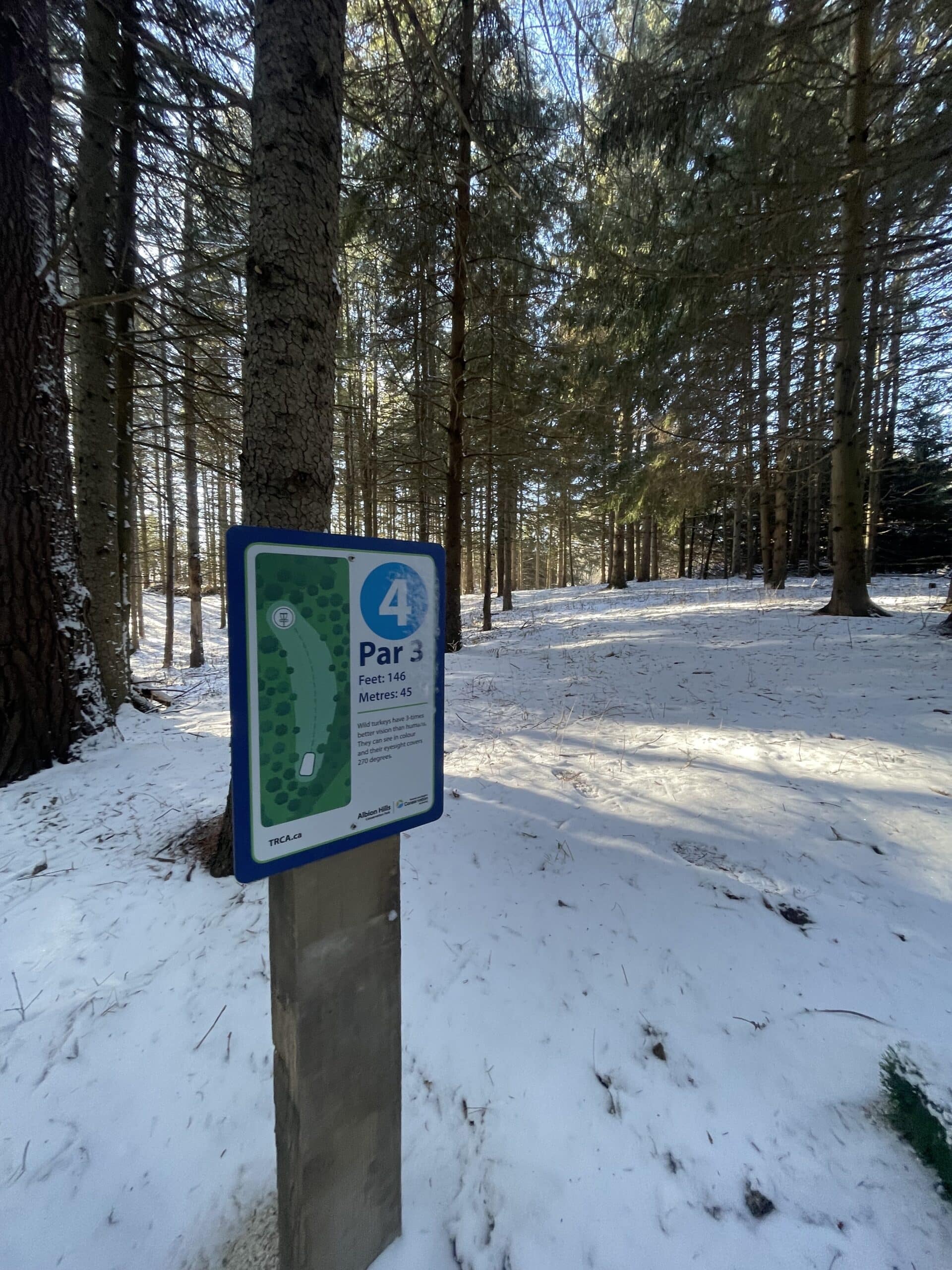
Tying into existing programs can provide additional opportunities for conservation education. TRCA’s Girls Can Too is a summer program designed to introduce and prepare young women for careers in the trades and environmental sector. By participating in hands-on projects, young women can build the confidence, knowledge and skills needed to succeed in these types of roles. Cara led two sessions over two days that involved building wooden tee pad frames and assembling DiscGolfPark targets. Future builds will include turtle boxes, bird houses and benches that will be placed throughout the course.

Cara teaching pad framing at Albion Hills
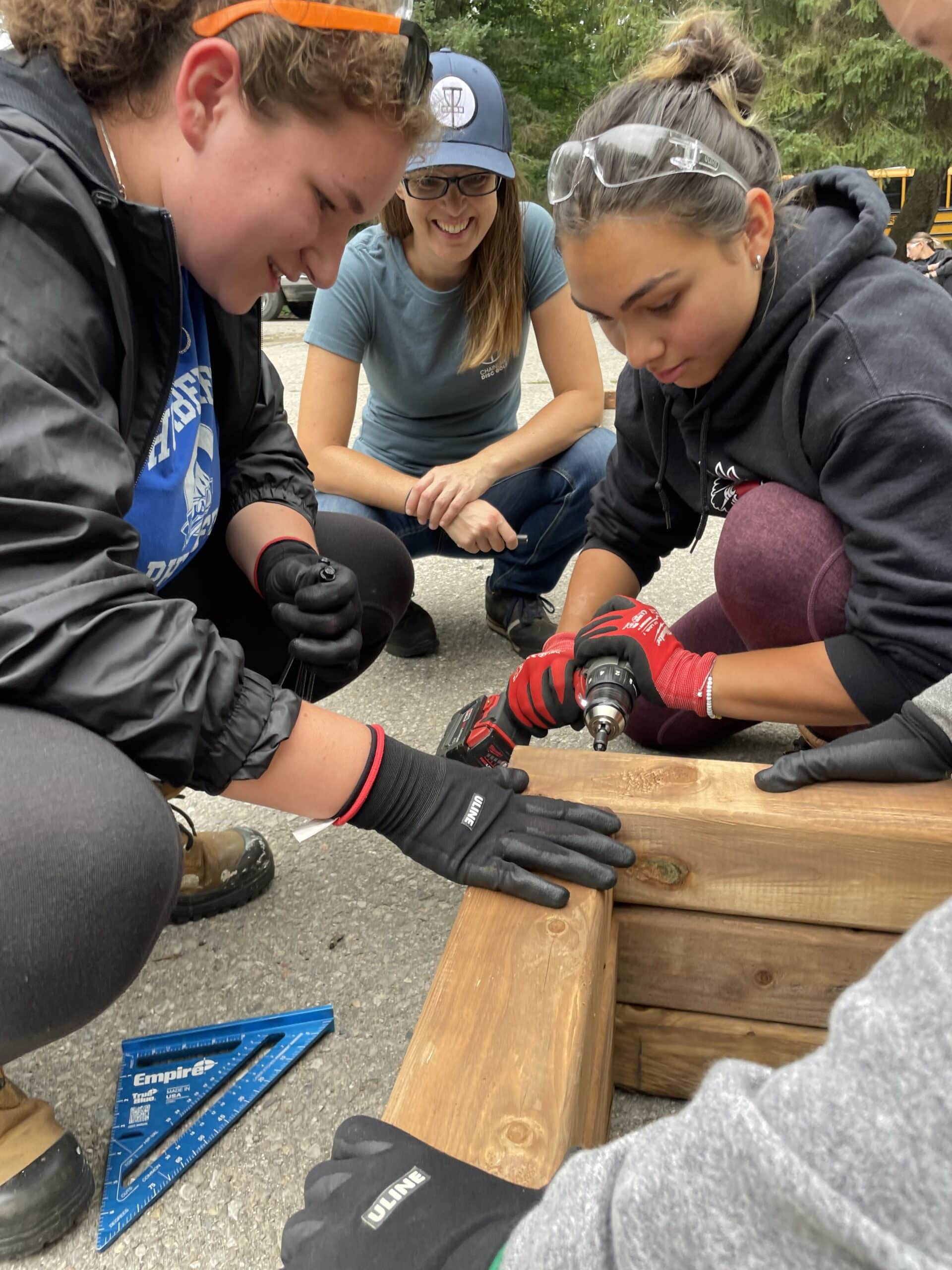
Girls Can Too program teaches pad frame assembly at Albion Hills
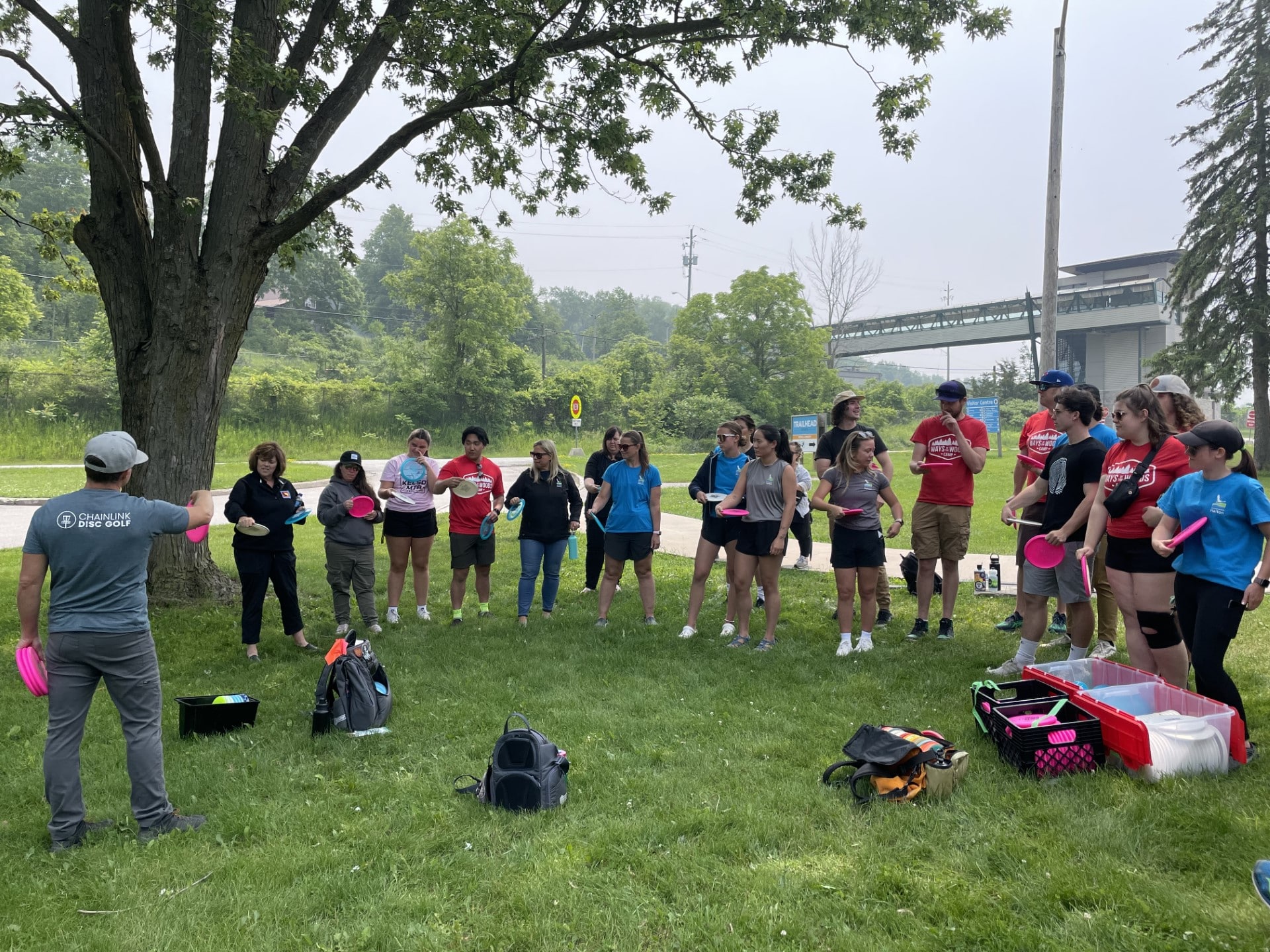
Jeff teaching staff about disc golf at Kelso Conservation Area
ChainLink Conservation Series
This upcoming year will be the first year of our ChainLink Conservation Series, disc golf tournaments and events held on courses we’ve designed and built on conservation lands. These events will focus on raising awareness and supporting conservation efforts. Partnering with thoughtful brands and incorporating items such as wildflower seeds and ready-to-plant saplings as part of the player packs are just a few of the ways we hope to share more about conservation. Discs branded with species-at-risk stamps will be available, along with opportunities to volunteer or donate to support conservation efforts.

Of course, this is all just a start. As disc golfers, and as course designers, it is our responsibility to continue educating ourselves and understanding our personal and collective impact on landscapes. Local governments and conservation authorities often provide a wealth of information and resources that can help us all become more thoughtful in our approach to nature. These projects have changed us for the better, and we’ve been inspired to grow the relationship between disc golf and conservation even more into the future.
Jeff MacKeigan #86191 & Senior Editor Cara Hovius #123037 are the co-founders of ChainLink Disc Golf, whose focus is to grow the sport through courses, events and community. They are based in Toronto, Ontario, Canada.

